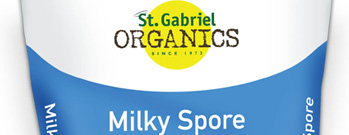


Which is why, when the phone rings, I find myself saying into the receiver, “There’s really nothing you can do,” before I even get the caller’s name.īonnie Blodgett publishes the Garden Letter. I know I’ve written about JBs before, but I don’t think gardeners can get enough on this topic at this time of year. Inevitably, I succumb to animal instinct and just have at them with my fingernails and, when the blossom is really smothered in them, with my shoes. Sometimes, I spray them and whisk the immobilized beetles into a bucket of water. After attracting all the beetles in my yard to the rugosas, I launch an assault. Introducing storebought nematodes into the turf to make war on beetle larvae is a good long-term project, like trapping moles. Milky Spore is safe to use along with other herbicides and fertilizers and it is harmless to birds, bees, and fish. Milky spore will be more trouble than it’s worth. Pheromone traps will bring every bug in the county to your neighborhood. You want to nail as many as you can before a) they’ve eaten everything and b) there are so many that, when they lay their eggs, there will be a bazillion next year. They usually don’t emerge until July, then vanish in August as suddenly as they arrived. They spend winter turning into grubs that feed on turf grass roots and underground organisms. Japanese beetles are only beetles half the time. They also happen to be beautiful plants, with unusual crinkled leaves and ruffled flowers that rebloom about the same time the beetles have fully formed out of the larval ooze that did a number on your lawn. Rugosas are shrub roses preferred by Japanese beetles. Can anyone give me an idea where to find Milky spore Ive tried our local farm supply store, Ace, Home Depot and Lowes and a few other local shops and cant find them. How come I’m such a know-it-all on this subject? I’ve been waging war on JBs for four years, and I think I’ve come up with a winning strategy, which I passed on to Bill. Next time, call me before you throw away 100 bucks.” And the beetles will return and shred them again. “If the leaves are entirely shredded, I mean confetti – no, worse than confetti – will the trees even come back next year?” Sad to say, he had behaved impulsively and inoculated his trees with something expensive, messy and smelly that supposedly will protect them from beetles – next year. “I hope you haven’t gone and invested in a bunch of worthless chemicals.” They made themselves at home in the temperate U.S.


They are an exotic species, brought here around the turn of the 20th century, possibly in a rose blossom. They are difficult to control in the best circumstances because they have no natural predators outside Japan. Japanese beetles are copper-colored with hard shells and an unstoppable drive to devour leaves and flowers, especially those belonging to roses and beech and linden trees. It’s mid-August, the height of JB season, and the Twin Cities are in the midst of a relentless onslaught. In the morning, dead bug bodies crowd the windowsills after a night of futile fluttering against the screens. We bring in live insects, too, because the screen door is usually ajar. Mel and I also bring in dead leaves that get ground up in seat cushions and wedged under radiators. I am perpetually scrubbing my fingerprints off the back door and Mel’s paw prints off the sofas, carpets, drapes and coffee tables. My house is a mess from April through October. I also wonder if the fact that the plant had bugs indicates no trace of neonics.Gardening can be hard on a marriage and even harder on a house. I’m wondering if I should believe him or if he was trying to save a sale. I asked if the plugs were treated and he said they were from their Ohio facility which is 99% neonic free. The milk spore is a naturally growing bacteria, with the active ingredient being Bacillus popilliae. They called me back and said they didn’t use any neonics at the TN facility. I called the vendor listed on the tag (ICG Inc, Smithville TN) and left a message. It actually requires to ingest the spores and then as they die their carcass becomes part of the control to help spread the spores throughout your lawn. However, this is a long term approach and can take years for the spore to spread throughout your lawn. My yard is very wild with some hedges/old plants for structure I have wildlife including hummingbirds and wasps that dominate the feeders and bought this reblooming weigela largely for an always-available source of nectar. Another biological control is Milky Spore which is actually bacterium pacenibacillus popillae. The neonic issue is the one that worries me (why I don’t buy plants there). If you could help me again with the neonic issue, I would so appreciate it! My concern is clouding my judgement, any thoughts are helpful. Maybe I’ll use some milky spore to make sure. I did give it a vigorous wash and don’t see any more bugs.


 0 kommentar(er)
0 kommentar(er)
